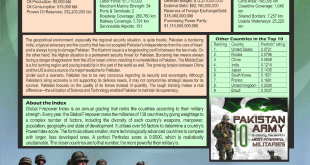Energy consumption in offices and workplaces needs to be addressed on a large scale as lot of energy is consumed and wasted here. The use of excess energy contributes to the problems associated with dwindling fossil fuel reserves. Also, wasting energy reduces profitability.
The government support programmes in some countries on energy efficiency and management as well as carbon management have proved that most companies can reduce their energy costs by implementing maintenance and cost-effective measures, which help in managing energy consumption in offices and workplaces.
The 5 steps and tips for effective management of energy consumption in offices and workplaces are: –
1. Commitment
2. Understand
3. Plan and Organize
4. Act
5. Control, Monitor & Review
Step 1. Commitment
Energy must be used efficiently within the organization in order to keep carbon dioxide emissions to a minimum wherever possible. The organizational policy should include steps and effective measures towards the environment- the senior management must set an example by inculcating a sustainability drive in office premises and by adapting renewable energy and encouraging projects that make use of clean energy. This will definitely give rise to energy efficiency and improved management of energy consumption in offices and workplaces. A few of the employees within the organization must form a team and take up the responsibility to make other employees aware of the importance of energy efficiency and this team must get all the necessary co-operation needed by the senior management. This energy team must act as the firms eyes and ears for managing energy wastage; be responsible for reading the meters and checking the fuel bills; develop a weekly or monthly checklist of duties; and consider forming an ‘Energy Action Team’ to report on progress and problems to stimulate further action.
The Key factors for commitment and efficient management of energy in offices and workplaces are: –
Pressure for change (senior management commitment is essential)
A clear shared vision (involvement of staff)
Capacity for change (provide the resources: time & finance)
Action (monitor performance & keep commu nication channels open)
Step 2. Understand
‘You can’t manage what you don’t measure’ is especially true for management of energy in offices and workplaces. Meter readings at regular and frequent intervals are necessary to control the energy costs. Constant watch on the meter will enable: –
Identification of exceptional consumption and quick attention to the causes
Checking of utility invoices will ensure that the payment is done only for the amount of fuel that is consumed
Comparison of current costs and performance with previous years
Comparison of several sites, processes or buildings in the company with each other
Assessing the seasonal pattern of consumption
Making these comparisons will help set improvement targets and identify where the greatest scope for saving energy exists in business. How often you take meter readings will be determined by how much energy is used. As a general rule of thumb, meters should be read monthly if invoicing is quarterly and be read weekly if invoicing is monthly. Meter readings can be recorded on worksheets or on a computer spreadsheet. In either case consumption can then be displayed graphically, which is useful for detecting trends and giving warning of exceptional consumption. In short paying attention to the simplest activity helps in efficient management of energy consumption in offices and workplaces.
Step 3. Plan and Organize
An energy policy statement must be introduced in every organization to raise the awareness among the staff and demonstrate the commitment of senior management towards management of energy consumption in office. A simple policy statement should set out the main objectives, together with the performance targets that need to be met to fulfill the objectives. Once objectives and targets have been agreed, action plans can be drawn up to drive the management plan forward and set down what needs to be done and when.
Step 4. Act
A good way of managing energy consumption in office and finding energy waste is to conduct an initial energy walk-round. Ask key members of the staff to identify problems and opportunities, and ensure that they feel part of the assessment process. The pattern of energy use will vary throughout the day, so it is useful to vary the times of the walk-rounds, for example:
When the cleaners are on duty
At lunchtime
At night or over weekends (if the meter readings indicate that there is unexpectedly high energy use during these periods)
Whenever energy is being wasted because of lack of awareness, or procedures are being ignored, repair or maintenance work is needed to reduce energy costs, or there is a need for capital investment.
Step 5. Control, Monitor & Review
Energy management should be a process of continuous control and improvement, not a one-off effort. Recording as well as monitoring systems must be set up to check whether targets are being met.
Monitoring and Targeting (M&T) has been shown to be an effective management tool in numerous companies and organizations But it should be kept up. Experience has shown that once companies stop monitoring their energy use on a regular basis, waste starts to occur ‘often at least 10% in a relatively short time. This is because problems arise (for example failed or wrongly set controls) and procedures change and the effect on energy consumption goes unnoticed or unexplained.
Therefore, efficient management of energy consumption in offices and workplaces, with regular data collection, its review, monitoring and control will ensure that energy is not wasted and there is efficient energy use.
 Jahangir's World Times First Comprehensive Magazine for students/teachers of competitive exams and general readers as well.
Jahangir's World Times First Comprehensive Magazine for students/teachers of competitive exams and general readers as well.


